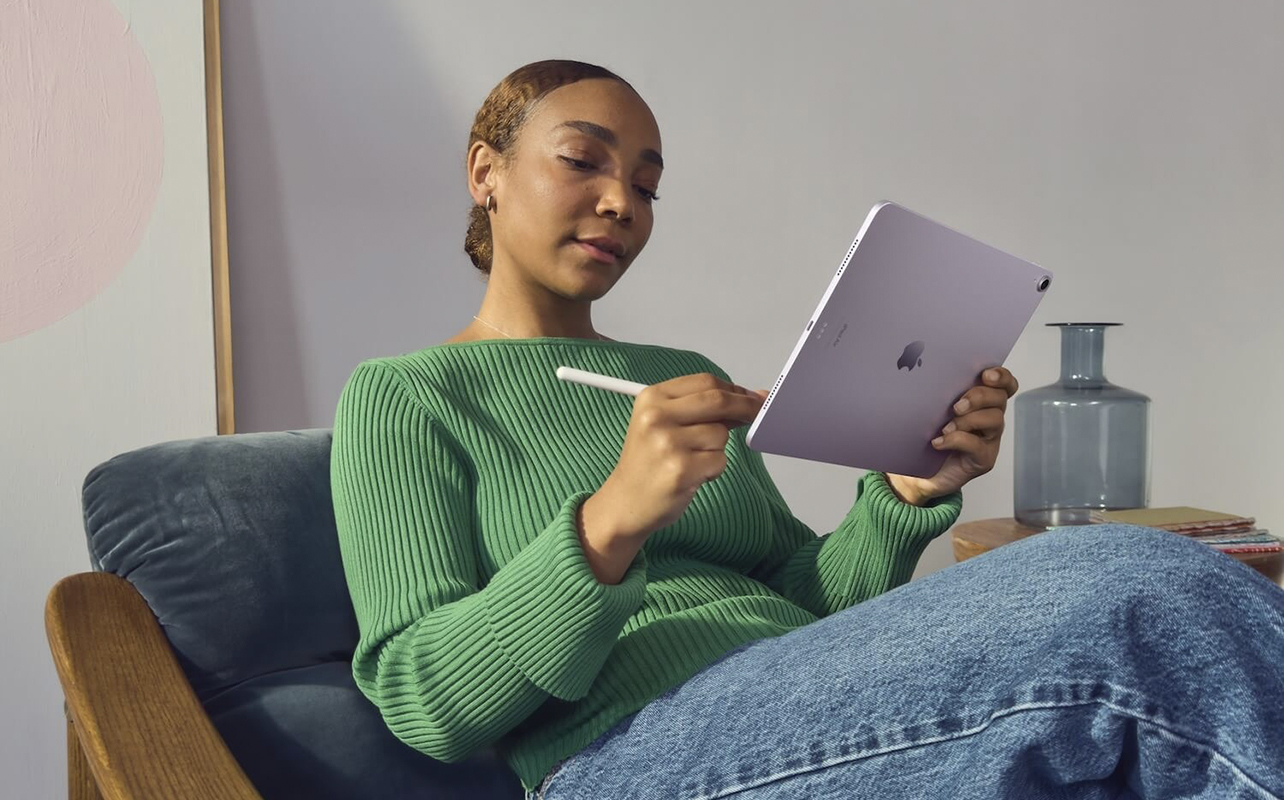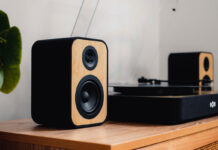
When you want to sit down to enjoy your tablet, there are few things more frustrating than tapping on the screen and waiting… and waiting… for something to happen but nothing does. Whether you’re trying to browse the web, stream a show, or even just answer an e-mail, a slow tablet can bring your entire day to a crawl. If you’ve ever asked yourself, “Why is my tablet so slow?,” you’re not alone. The good news? Many common causes of a tablet exhibiting sluggish performance are completely fixable, even if you’re not too tech-savvy.
In this guide, we’ll walk you through the most common reasons your tablet might be lagging and provide easy, actionable steps to help speed things up. Whether you’re trying to breathe new life into an old device or just want your tablet to run more smoothly, these tips can help extend its life and save you the hassle of a premature upgrade.
Common reasons why your tablet is slow

There’s no single answer to “Why my tablet is so slow?” But here are the usual suspects and troubleshooting steps you can take to rule out some of the most common issues. Identifying the root cause is the first step toward fixing it.
Too many apps running in the background
Multitasking is great until your tablet tries to do too much at once. Many apps stay open in the background even when you’re not using them, eating up memory (RAM) and slowing things down.
Outdated operating system or apps
If your tablet hasn’t had a software update in a while, it could be running outdated versions of the operating system or apps. These older versions don’t include the latest performance improvements. Updating is crucial for security patches as well.
Insufficient storage space
When your tablet’s storage is almost full, performance can take a serious hit. Tablets need a bit of breathing room to function efficiently, especially for installing updates or saving new files. You can check in settings to see not only how much storage space you have used (and how much is left) but also what’s taking up most of the space.
Low battery or battery saver mode
Battery saver modes reduce performance to extend battery life. That’s helpful when you’re on the go, but it can also make your tablet feel sluggish. Low battery levels can have a similar effect. Keep the tablet sufficiently charged at all times. Consider investing in a portable power bank for top-up power if you tend to use the tablet on the go often.
Too many widgets or live wallpapers
Those animated wallpapers and interactive widgets might look cool, but they can drain system resources in the background. This will, in turn, slow things down, especially on older tablets. If you haven’t yet upgraded to a newer model, try eliminating these extra niceties in favour of better overall performance until you can invest in a new tablet that can handle it.
Aging hardware
Tablets don’t last forever. If your device is several years old, the hardware may simply be struggling to keep up with today’s apps and operating systems. Even basic tasks can feel slow when your processor and memory are outdated. Even though some older model tablets might technically support the latest version of the operating system, it doesn’t mean it will run efficiently. If your tablet is the oldest model with support, it’s a good indication that you should consider upgrading soon.
Malware or adware (especially on Android)
Downloaded an app from an unknown source? You could have picked up some malware or adware, which can bog down your device. Adware often runs in the background, using up data and power while flooding you with pop-ups. Try running a virus scan or take the device to a professional, like a Geek Squad agent, to confirm that there are no viruses, malware, or adware on it.
How to fix a slow tablet: Step-by-step tips

Now that you know the common causes, let’s look at how to fix them. Most of these steps are quick, easy, and require no special tech knowledge.
Restart the tablet
It sounds simple, but it works. Restarting clears temporary files and background processes, giving your tablet a fresh start. There’s also something called a “hard restart” or “force restart,” which is a reboot of the system versus just turning it off and on again. With an iPad, for example, this includes either holding down the Home and top button or volume up, down, then top button (for iPads without a Home button) for about 10 seconds until the Apple logo appears. Check the manual to find out the best way to force restart your specific tablet model.
Shut down actively running apps
Every tablet has an option to show all the apps that are currently open. If you don’t need them to be running in the background which, in most cases you don’t, shut them down one by one. This is usually down by swiping up (with a tablet like an iPad) or tapping an “X” to close them. If you haven’t done this in a while, you might be surprised to see dozens still open and actively running, slowing the system down.
Clear app cache or uninstall unused apps
Apps build up cache over time, which can clutter your storage. You can clear cache in your tablet’s settings or delete apps you haven’t used in months. You’ll usually find details on what is taking up so much storage somewhere in the settings menu of the tablet, typically under Storage.
Update software and apps
To ensure your tablet is running smoothly, check system settings and download any relevant system updates. Restart the device from there and see if that fixes the problem. It’s also worth updating apps via the App Store (iOS) or Play Store (Android) to boost performance and fix bugs. While having app updates run in the in the background is convenient, it also eats battery life. If you changed this setting, you’ll need to periodically go in and update the apps as updates become available.
Free up storage
Spending some time for a device clean-up can help. Remove things like duplicate, blurry, and unneeded photos, offline maps, videos, and PDFs. Uninstall and remove apps you haven’t used in a while. Clear out old e-mails. You can always offload things like photos to a cloud service like Google Cloud or Apple iCloud. One thing that can easily eat up a lot of storage space but that we often forget about is downloaded content from streaming services. If you downloaded a few Netflix movies for offline viewing on your last flight, they’re still on the tablet until you delete them!
Disable animations and visual effects
You can turn off visual flourishes like screen transitions and animations in accessibility settings. This reduces the load on your tablet’s processor.
Use lite apps when available
Apps like Facebook Lite, Gmail Go, or Messenger Lite are designed for lower-spec devices. They use less data, less battery, and less processing power.
Factory reset (as a last resort)
If nothing else works, a factory reset will wipe your tablet clean and restore it to its original state. Be sure to back up your data first. This step is especially helpful if the device has malware or persistent lag.
Tips for preventing future slowdowns

Keeping your tablet running smoothly isn’t just about fixing problems, it’s about preventing them. A good start is to always keep software updated. Set updates to install automatically when connected to Wi-Fi. If you’re worried about battery drain, just keep an eye out for pop-up notifications that an update is available and run it as soon as possible. Offload photos and videos to a cloud service periodically to free up space. Or, take some time once a month to go through photos and remove ones you don’t need to keep. Only download trusted apps from trusted sources. Finally, reboot the tablet once a week or so. This can help prevent slowdowns and clear memory.
Should you upgrade your tablet?
Sometimes, no matter how many tweaks you make, your tablet is just too far gone. But how do you know when it’s time to let go? Here are some surefire signs that it’s time to upgrade.
- Your tablet can’t run the latest operating system.
- Essential apps no longer support your device.
- Performance issues persist even after a factory reset.
- Battery life has dropped significantly.
- Storage space is constantly full despite your best efforts.
Technology evolves quickly, and newer tablets offer better performance, more efficient batteries, and security updates that older models just can’t support. If your tablet is more than five years old, upgrading might be your best bet.
Need help choosing a new one? Find the right tablet for your needs at Best Buy Canada and get help with choosing the right model in our tablet and iPad buying guide. If you’re looking for a kid-friendly device, a productivity powerhouse, or something affordable for streaming, there’s a tablet that fits your lifestyle and budget.
Speed up your tablet today

To wrap things up, the reason your tablet is so slow could be a mix of various things. It could be an outdated operating system, you’re running out of storage, you have too much running in the background, there’s a virus, or maybe it’s just plain old and on its last legs. Start with the simple fix attempts, going through this checklist. If there’s still some time left in the tablet, one of more of these fixes should help breathe new life into it. Otherwise, if it’s still running at a snail’s pace, consider an upgrade. Check out the latest tablets at Best Buy Canada to find one that’s right for you.
Have you tried any of these fixes already, or is your tablet beyond saving?
This article was drafted using AI technology and then reviewed, fact-checked, and revised by a member of our editorial team.





